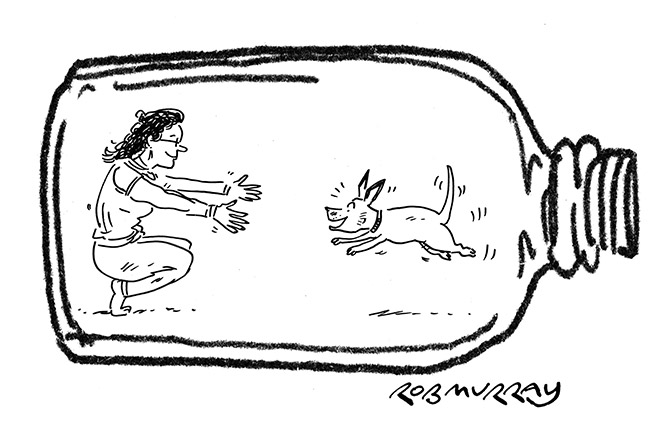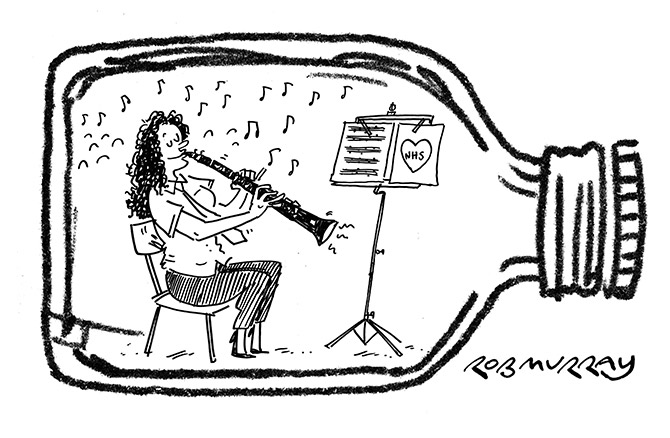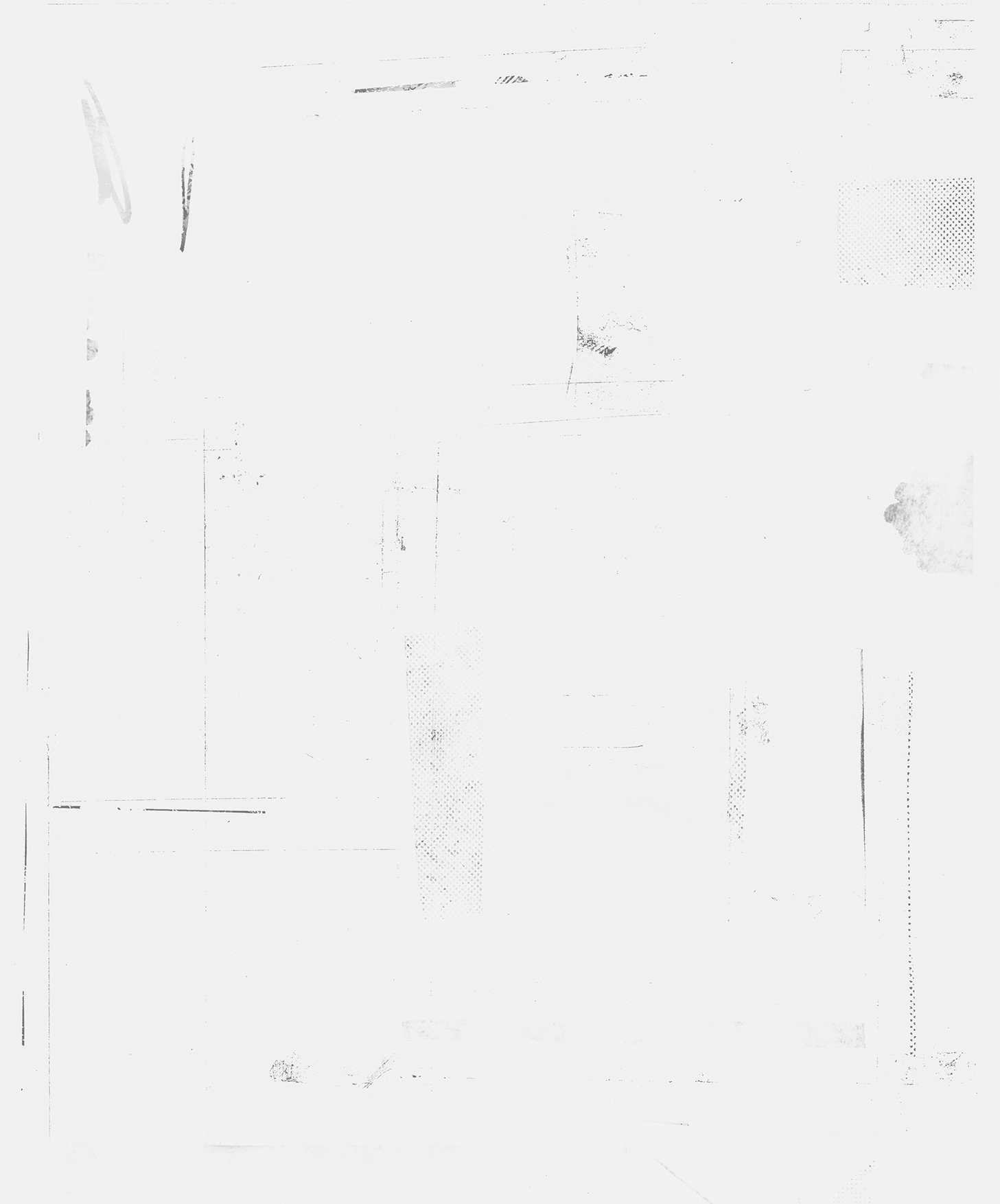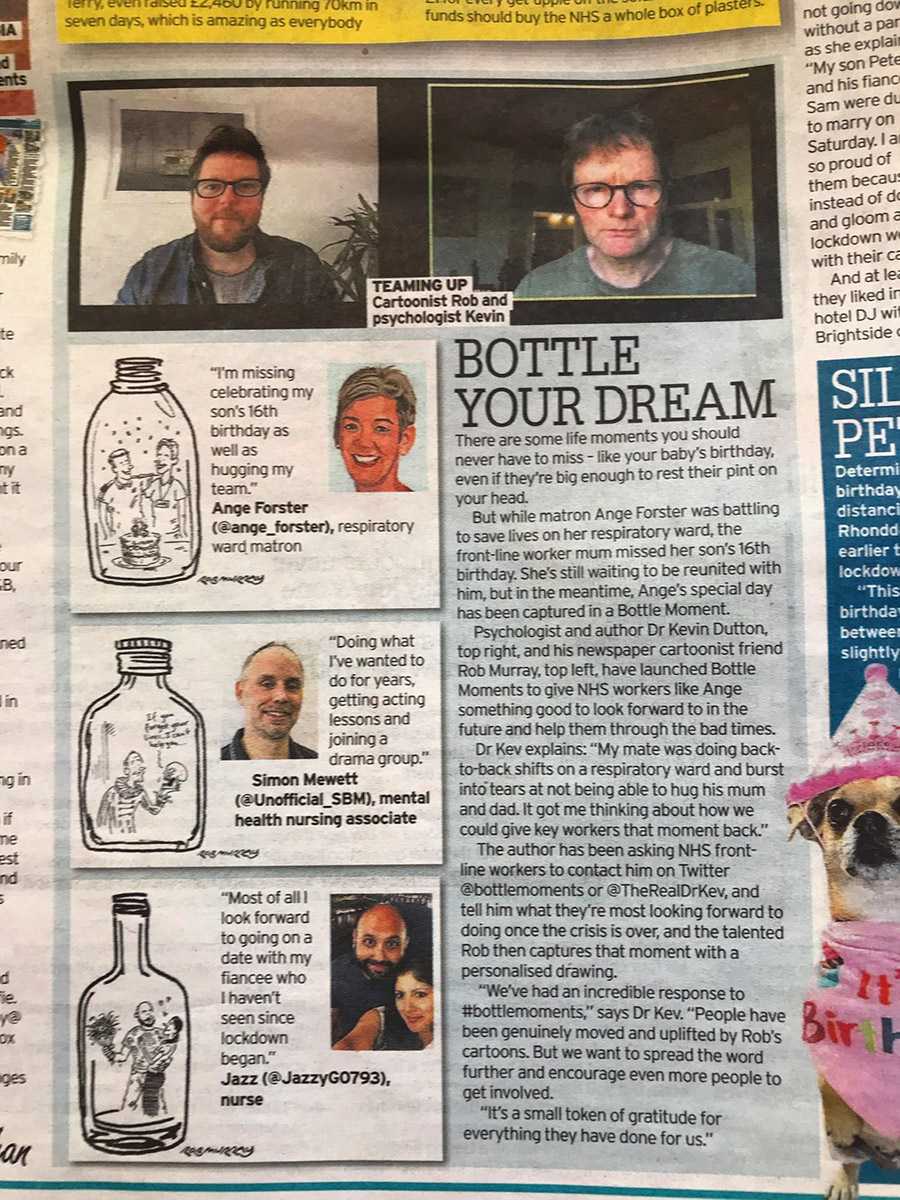Bottle Moments
Bottling moments as a vaccine against humanity.
This article originally appeared in The Psychologist blog.
On the evening of 17 April 2020, as deaths from the Covid-19 pandemic approached their peak here in the UK, I was speaking to a friend of mine on Zoom. She was a nurse, working on the front line in a Covid ward in a major London hospital, and had just come off a 12- hour shift.
To be honest, I felt inadequate. I’d known this woman for over 20 years. But suddenly, sitting there in front of my screen, I saw her in a different light. She was a war hero. An angel. My protector. I felt tongue-tied, like a teenager whisked off backstage after a concert to meet their favourite band member.
I don’t really recall much of what we talked about that night. But I do recall asking her this:
“What are you most looking forward to when all this is over?”
She looked away, looked down, covered her face with her hands, and burst into a flood of tears. Deep, hot, heavy tears of fear, desolation and exhaustion.
“I just want to hug my mum and dad,” she said, her whole body shaking uncontrollably.
How I wished I could’ve hugged her that night.
This may sound like a trite admission but it isn’t. Ending that Zoom call was one of the hardest things I’ve done. But once I’d got rid of the speck of dust in my eye I thought about the matter at length. What would I give, I asked myself, to be able to fast track my friend’s dream of hugging her mum and dad, to bottle that moment, so she could uncork it whenever she wanted? And not just her dream, her moment, but the dreams and moments of other frontline workers just like her up and down the country. Other people’s friends. Other people’s angels. Other people’s protectors.
The next morning, I picked up the phone to a friend of mine, Rob Murray. Rob is one of the UK’s top cartoonists who regularly contributes to Private Eye and the Sunday Times. “How would you feel,” I asked him, “if we were to put out a call on social media inviting key workers to share their Bottle Moments with us – the things they most want to do when lockdown is over: loved ones they long to see, treasured places and hobbies they can’t wait to revisit, events put on hold – and then we enshrine them for them in simple, fun cartoons?”
Rob didn’t hesitate. “I’m up for that!” he said. So we did. Bottle Moments was born on the spot.
First to get in touch were a pair of junior doctors, one working on a Covid ward at the Royal Marsden Hospital in Chelsea, the other at Kingston Hospital in Surrey. They yearned to hike back up to the top of Tryfan, a mountain in Snowdonia, where they’d got engaged the year before (theirs, it turned out, was one of many weddings that the virus had kicked into touch). Once Rob had drawn that inaugural ‘peak experience’ and we posted it on Twitter – you can see the cartoon above – other requests followed. A student nurse couldn’t wait to be reunited with the dog that she’d left at her parents’ house just before lockdown; a GP longed for the day that she could take to the stage again with her local orchestra and play the clarinet.


As keyworkers continued to dream, Rob continued to draw, and I, in my newly acquired role as endurance typist, continued to post. Pretty soon, there were some rather familiar hashtags in evidence: #together, #hugs, #reunited.
As our output increased so did media interest. We were invited on to the Ian Collins Show on talkRadio and the Mirror did a feature. Then came the big one: Good Morning Britain.
“What is it about Bottle Moments that makes it so powerful?” the presenter, Ranvir Singh, asked me. “We all have photographs of family and friends. But this is different. Why?”
It’s a question I’d been asking myself.
Part of the answer lies in a book that was first published in Vienna in 1946. Man’s Search For Meaning was written by the Austrian psychiatrist and Holocaust survivor, Viktor Frankl, and chronicles the time the author spent in various Nazi concentration camps during the Second World War. Out of every 40 people who went into a concentration camp only one came out alive and from his experiences in Theresienstadt, Auschwitz, Kaufering, and Türkheim, Frankl was able to distil a bestial, beatific truth that would form the theoretical basis of the rest of his life’s work: those who have a ‘why’ to live for can bear almost any ‘how’.
Frankl discerned that those prisoners who were better able to retain a sense of meaning in their lives, even in the midst of the most appalling degradation, were those who stood the greatest chance of survival. Memories of happier times and hopes for a brighter future, Frankl discovered – Bottle Moments, in other words – were a vaccine against inhumanity. What Rob and I do is draw them.
This leads us to another active ingredient of our fun and simple cartoons. They’re fun and simple… and free! The late Alice Isen spent a large part of her career at Cornell University making people happy – and then looking at how this influenced their thought processes and attitude towards others. She conducted many well-known studies over the years, perhaps the most famous of which involved giving doctors a surprise bag of candy as a thank-you present and seeing whether this surprise, spontaneous offering improved the accuracy of their diagnoses and general bedside manner. It did. The gift of five mini Hershey bars and an assortment of boiled sweets made them appreciably better physicians: more caring, compassionate, and thorough in their work.
“We don’t know yet how positive affect works on the mind,” Isen commented, “but we have some idea of the process. When people feel happy, they have better access to more varied material in their memory.”
Which, in the case of our simple Bottle Moments cartoons, only heightens the salience of the moments they seek to create. Receiving a gift has a feel-good factor about it. But when that very same gift effuses and encapsulates meaning, you have a feel-good factor2.
There is one final ingredient in Bottle Moments that contributes to its appeal and it is one that is well known to students of persuasion and influence: the cartoons we draw are both striking and highly personal. Several years ago Randy Garner at Sam Houston State University sent out a batch of lengthy surveys which he wanted fellow professors at the university to complete. Garner discovered that those surveys that were sent out accompanied by a colourful, personalized post-it note were not only significantly more like to be returned, they were also returned more quickly.
Eye-catching and personal is a powerful combination which Bottle Moments encapsulates perfectly. Attention to detail is everything. Every grin on every cockapoo is there for a reason!
Covid, some day, will have had its day. But Bottle Moments, we hope, will live on. Bright, cheerful, personal, and meaningful, these snapshots of lives in happier times – times past yet still to come – have a place on the walls not just of nursing stations and doctors’ surgeries but of care homes, prison cells, cancer wards, homeless shelters, not to mention in the kitbags of those members of our armed forces serving abroad.
Bottle Moments is a recipe for rainbows.
And we all need a rainbow sometimes.



